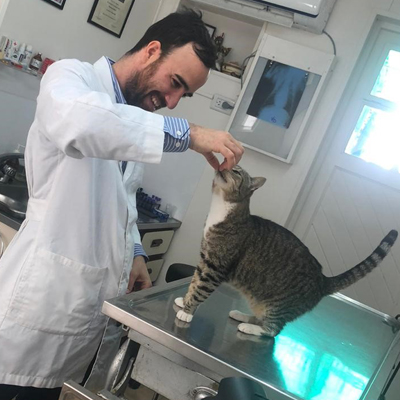Diabetes in cats: detect it, treat it – and get your life back
Diabetes mellitus – did you know that cats can get it, too? Having your cat diagnosed can be a scary experience at first, but feline diabetes – while chronic – is very treatable. With the right treatment plan prescribed by your vet, diabetic cats and their owners can continue to live their normal lives despite the disease.

Most people would never think about the possibility of their cat developing diabetes, so let’s step into the shoes of someone whose cat becomes diabetic. Imagine you had a cat named Pat. Pat is an unpredictable little trickster; lounging on your computer keyboard, attacking your toes – and then all of a sudden turning into the most endearing little snuggle bug. Because Pat is an aging cat and has gained a bit of weight, you don’t think much about her becoming less active over time, and it takes a while for you to notice that she is going through other changes. But day by day, it’s becoming clearer that something is up.
Potential signs of diabetes in cats
Signs of diabetes can be quite subtle. Find out which symptoms Pat and other diabetic cats may experience:
Cat diabetes – from diagnosis to understanding the disease
To get to the cause of Pat’s symptoms, you make an appointment with your veterinarian who, in addition to the routine check-up, screens Pat for diabetes. The test comes back positive: Pat has feline diabetes mellitus. You’ll probably want to know what this means. Your vet explains:

As you listen, you can feel your heart sink a little. You ask how Pat can be treated.
A revolution in diabetes care: once-daily treatments for cats
Feline diabetes management is currently undergoing a paradigm shift through the introduction of a new product class: SGLT-2 inhibitors. A new once-daily, oral, and liquid treatment makes diabetes care a simple and easy to fit into a daily routine.
Historically, diabetic cats needed to receive twice-daily insulin injections which required time-intensive blood glucose curve monitoring and frequent check-ins. While insulin treatment can be lifesaving, it can also disrupt the lives of cats and their owners.
The new, once-daily, oral, and liquid option eliminates the need for needles or complex monitoring, reducing disruption to the lives of both, cats and their owners. Both cat and owner can get back to living and focus on what matters: cuddling, playing, and, well… maybe an occasional attack on the owner’s unsuspecting toes.
Diet and exercise matter. These lifestyle changes help you manage feline diabetes
Looking at Pat’s relevant health markers, your vet determines her treatment plan.

Living with a diabetic cat: what cat owners should know
Feline diabetes is a chronic disease, which is why you will need to follow your vet’s treatment plan for the rest of Pat’s life. Soon – and with relief – you observe how Pat’s symptoms disappear. You can feel your lives get back to normal.
Now let’s step back from the world of Pat and back into your own life again. Do you know a diabetic cat like Pat? Or do you think your own cat could be affected? Diabetes and other chronic diseases can cause damage long before your cat shows any symptoms, which is why regular health-checks (at least annual) are very important and recommended by international feline veterinary associations. If you do observe any potential symptoms, don’t wait. Call your veterinarian immediately and schedule a feline diabetes screening.
Related Content

Don’t let it be a losing battle

A beginner’s guide to fighting off cat parasites







